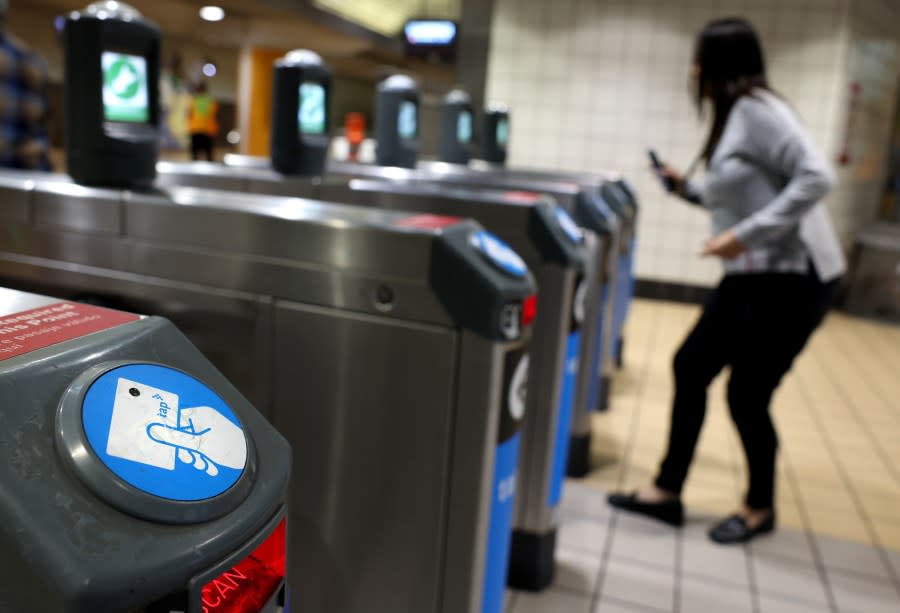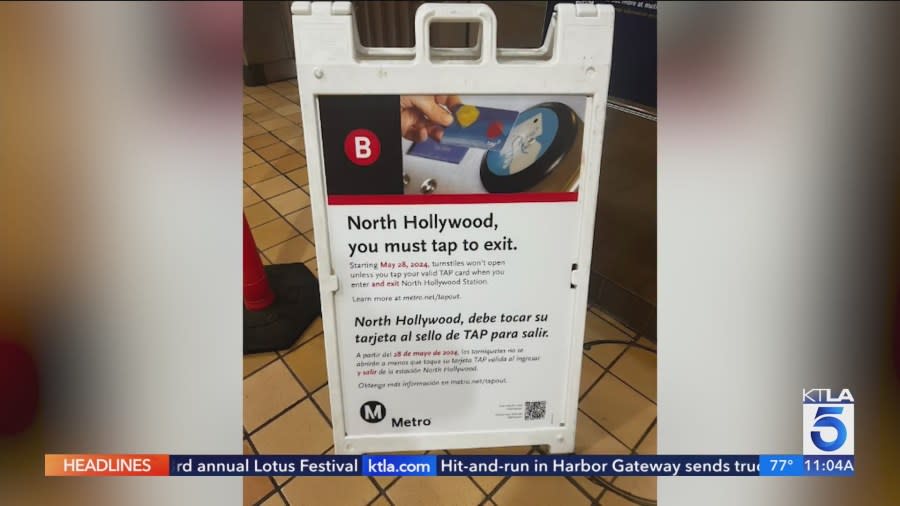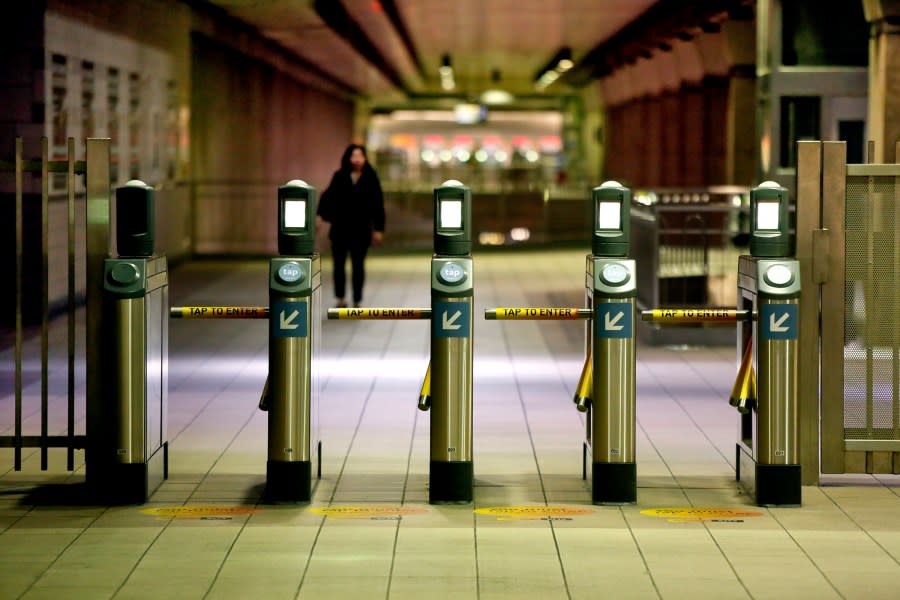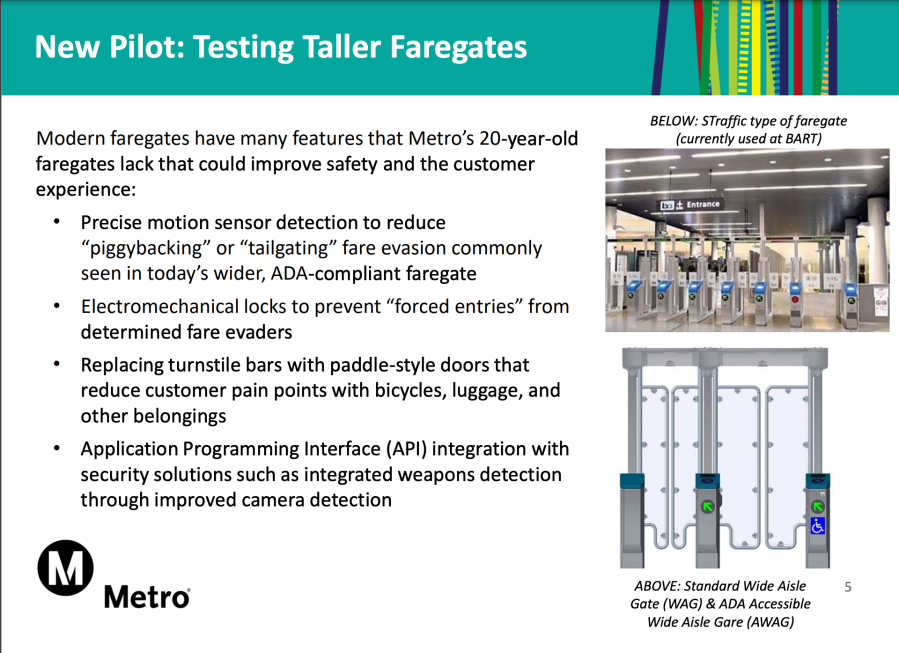LA Metro to expand ‘TAP to exit’ program, test taller fare gates

More changes are coming to LA Metro after the transit agency’s board approved several new initiatives aimed at improving overall security across the system.
Among the upcoming changes, the Metro board voted unanimously to expand the “TAP-to-exit” pilot program to more stations.
The program requires Metro riders to tap their transit cards to exit the station and continue along their journeys.
Earlier this year, the Los Angeles County Sheriff’s Department, one of the law enforcement agencies contracted to police the Metro system, released data that showed the vast majority of violent crimes committed on buses and trains and in stations were perpetrated by unticketed riders.
A presentation from LA Metro showed that the TAP to exit program, since its inception in late May, has successfully identified more than 25,000 riders who did not pay to ride and were subsequently charged upon exit.
Currently, TAP to exit is only in use at the North Hollywood station, and Metro officials have attributed the program to a measurable decrease in reported crime and violent incidents.
On Thursday, the board voted to expand the program to all 10 of Metro’s end-of-line stations, including the Downtown Santa Monica station on the E Line, Expo/Crenshaw station on the E and K lines, Redondo Beach station on the C Line and, most notably, Union Station in downtown L.A.
Downtown Santa Monica is the next in line for the program, Metro said.
In addition to the expansion of one safety program, Metro is looking into others.
Metro will begin testing taller fare gates at the new LAX Station that is set to open in November.
Most LA Metro fare gates use turnstiles or small wings like those seen at sporting events or when exiting a theme park. However, those fare gates aren’t often monitored and can be easily bypassed by ducking or hopping over the bar.
Renderings shown in a Metro presentation depict taller, larger plexiglass gates that are more robust and harder to get around. Fare gates similar to those proposed can be found in public transportation systems across the globe, including Bay Area Rapid Transit (BART).
The new gates will feature “precise motion sensor detection,” which is meant to prevent fare evasion by someone trying to sneak through behind a paying rider.
The fare gates could also have integration with other security systems including weapons detection and cameras.
Metro is considering installing these new fare gates at two other stations by November, including Union Station. The cost of that pilot program is estimated to be around $14 million.
Metro says a 30-day “advanced weapons detection” pilot program will also begin at Union Station and the new LAX Metro station at “no additional cost” to the public.
These latest security pilot programs are part of a larger strategy to cut down on rare but high-profile violent crimes across the Metro system as the city of L.A. prepares to play host several to some of the biggest sporting events in the world, including the FIFA World Cup in 2026, the NFL Super Bowl in 2027, and the 2028 Summer Olympics and Paralympics.
Copyright 2024 Nexstar Media, Inc. All rights reserved. This material may not be published, broadcast, rewritten, or redistributed.
For the latest news, weather, sports, and streaming video, head to KTLA.




